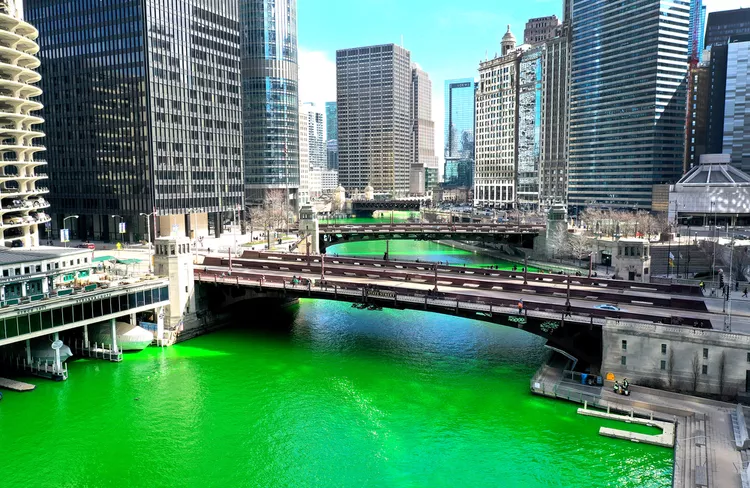Summary
Every year, St. Patrick’s Day in Chicago is celebrated with a massive parade. Preparations begin the Saturday before the holiday, when the city turns its namesake river green — part of a decades-long tradition that almost never happened.
In 1961, the city of Savannah, Ga., attempted to dye the river behind its City Hall green; however, the best they could do was create colored streaks in the water. The following year, Mayor Richard J. Daley — a politician of Irish-American descent who was raised in a heavily Irish neighborhood in Chicago — had been hoping to turn Lake Michigan green for the holiday.
After discovering that turning Lake Michigan green was a bit too much to ask, a group of Chicago plumbers identified the right formula for turning a city river the perfect shamrock shade, and a new holiday tradition was born in 1962. The discovery of the green color was a happy accident, according to the Illinois tourism site, as the plumbers union’s business manager observed bright green stains on another worker’s coveralls during a separate job, and the color proved perfect for the occasion.
“The dyeing of the river green is such a public event that it helped solidify the celebration of St. Patrick’s Day in the city,” Peter Alter, chief historian at the Chicago History Museum, mentioned. Had Daley not been of Irish heritage, Alter asserted that St. Patrick’s Day may not have become an iconic city holiday.
That first year, the Chicago Journeyman Plumbers Union dumped 100 pounds of dye into the river, which turned it green for an entire week. Nowadays, the union uses approximately 40 pounds of vegetable-based powder dyes that are more environmentally friendly, and that color lasts just a few days.
Consequently, depending on the weather conditions, the vibrant hue can typically stick around for several days. Every year, thousands of people brave the early morning chill to catch a glimpse of the boats as they drop the dye into the river before the city’s parade commences its march through the city center.
“It’s the perfect storm of celebration,” Alter stated.
Historical Significance of the Event
Chicago is among several U.S. cities (including New York City, Boston, Philadelphia, and New Orleans) that attracted large numbers of Irish immigrants in the 1800s. By 1850, about one-fifth of the city’s population was Irish. As a result, what had started as an unofficial parade transformed into an official city celebration of Irish heritage that solidified Chicago’s reputation as a legendary place to celebrate March 17.

Environmental Considerations
In recent years, the Chicago Journeyman Plumbers Union has made efforts to ensure that the dyes used are environmentally friendly. This shift not only reflects the growing awareness regarding environmental impact but also helps in maintaining the tradition in a sustainable manner.
More Parades in Chicago
In addition to the main St. Patrick’s Day parade downtown, extra parades are usually held on Chicago’s South Side, a major hub of its Irish population, as well as in Norwood Park, a northern neighborhood located near Chicago O’Hare International Airport.





